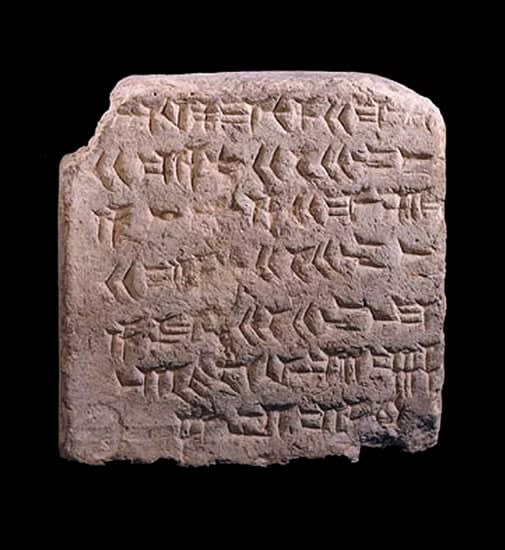Brick Dedicated to Shalmanessar III, 858 BCE - 824 CE
Stone
36.8 x 36.8 cm
14 1/2 x 14 1/2 in
14 1/2 x 14 1/2 in
PF.5520
Shalmanessar III reigned as the King of Assyria from 859 to 824 B.C. He was the son of Assurnasirpal and conducted 32 campaigns in the 35 years of his reign....
Shalmanessar III reigned as the King of Assyria from 859 to 824 B.C. He was the son of Assurnasirpal and conducted 32 campaigns in the 35 years of his reign. Many of the campaigns were directed against the lands west of the Euphrates, particularly against the powerful kingdom of Aram. Although he had some success and even received considerable tribute from the allies of Aram, including Israel, he failed to conquer Aram itself. Two of his monuments, now in the British Museum, are particularly noteworthy: the Black Obelisk on which Jehu, king of Israel, is depicted kissing Shalmanessar’s feet, and the plaques of hammered bronze known as the Gates of Balawat. This splendid brick features an inscription written in cuneiform, an ancient language inscribed using a series of wedge-shaped incisions. The text can be translated as: “Shalmanessar, great king, might king, king of the world, king of Assyria, son of Assurnasirpal, great king, mighty king, king of the world, king of Assyria, descendant of Tukulti-Ninurta, king of the world, king of Assyria, (brick for) the erection of the ziggurat of the city of Kalhu.” This stunning artifact records the greatness of a king who, were it not for such splendid monuments, might otherwise be forgotten. Thus this brick is one of the last resounding echoes of a king’s great call.
Literature
V29
